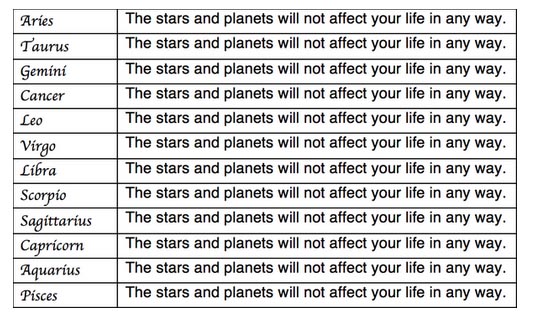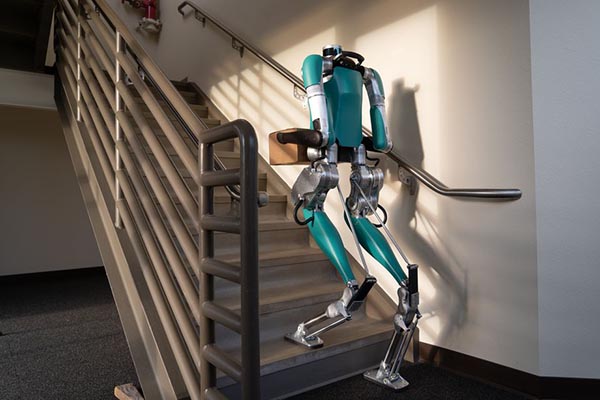My New Years resolution is to annoy less grammar pedants.
— Richard Osman (@richardosman) December 31, 2019
The Fur Flies
Fur in fashion is under attack. Again. Turns out it's an emotional topic, especially in the society salons of New York. From the Washington Post:
The most recent brawl took place in a wood-paneled, not-quite-grand salon in New York’s City Hall this spring. By the fifth hour of more than seven hours of public hearings on a proposed ban on the production and sale of new fur apparel, the testimony had spiraled into Shakespearean hysteria.
Salad Dressing
OK, if fur isn’t your thing, how about this: a wearable vest that grows a self-sustaining garden watered by your own urine? From CBC:
Aroussiak Gabrielian says she was inspired to create what is believed to be the world's first wearable farm after seeing what her body could provide for her newborn.
The project, Posthuman Habitats, is a vest or cloak that grows plants and crops using fertilizer from insects and human waste. The vests are currently on display in Beijing as part of an exhibition called Human (un)limited.

Roma Altrosazio
Between the fur and the vegetation, maybe synthetic fabrics are the way to go.
A Fraktured Fable
A dispute over whether Antiqua or Fraktur was the more ‘German’ font lasted hundreds of years. Otto von Bismarck refused to read anything not printed in Fraktur; Goethe and Nietzsche favoured Antiqua. The Nazis outlawed Fraktur, but printed the ban using Fraktur. pic.twitter.com/vGrialhadK
— Quite Interesting (@qikipedia) January 9, 2020
The Stars Look Down
Big Picture economics blogger Barry Ritholtz offers his annual astrological predictions for 2020:

Sneaker Net
Adidas gives up on reshoring sneaker production. The company is closing two Speedfactory operations, in Germany and Atlanta, moving all production to Asia. The goal was to be able to produce sneakers closer to the point of need to reduce shipping emissions, but that just hasn't panned out for the company, who has instead chosen to consolidate manufacturing in China and Vietnam. Sad.
Baggers Can’t Be Choosers
Shoppers in Thailand are getting creative after a new plastic bag ban https://t.co/mRHW4wUlzj pic.twitter.com/PcpLKSx1a8
— The Verge (@verge) January 6, 2020
Delivery Bot
In the not-too-distant future, when you order something online, you may see this stalking up your driveway:

Image: Agility Robotics
Meet Digit, a bipedal robot from Agility Robotics that is now for sale.
Digit is approximately the size and shape of a small adult human. It’s able to navigate environments semi-autonomously with the help of LIDAR and other sensors, and it can carry boxes in its arms up to 40 pounds (18 kilograms) in weight. Agility Robotics says it can be put to a range of uses, including in logistics, warehouses, telepresence, and industrial inspection.
Telepresence? Anyway, automaker Ford has bought the first two units to experiment with last-mile package delivery. How much will Digit cost? “Low-mid six figures.” But, said Agility’s CEO, “When factoring in upkeep and the robot’s expected lifespan...this amounts to an hourly cost of roughly $25.”
At some point, though, you may hear it grumbling, “Here I am, brain the size of a planet and they ask me to deliver a box. Call that job satisfaction? ’Cos I don’t.”
To Sleep, Perchance to Box
Recycling beds. Capital idea! For the Tokyo 2020 Olympics and Paralympics, competitors' bed frames will be made of cardboard and recycled into paper products after the events, and the mattresses will be made from polyethylene materials that will also be reused. The Japanese say they can withstand more than 440 pounds. Wonder when we will see this in our Hiltons and Sheratons as we travel the world? Or, perhaps, when a rogue Digit will pick up the box, sleeper and all, and carry them away.
Snowball’s Chance
The world’s first online shopper was Jane Snowball, a pensioner from Gateshead. In May 1984 she used a TV connected to her local Tesco via a phone line to order margarine, cornflakes and eggs in a council scheme to help the elderly. https://t.co/eKpC8RrBai
— Quite Interesting (@qikipedia) January 3, 2020
Postcards from the Verge
The Consumer Electronics Show (CES) took place in Las Vegas this week. Here is an index of The Verge’s CES coverage.
Some random notes:
- Byton’s electric car features a 48-inch screen on the dashboard that supposedly is not distracting. Pedestrians are hereby warned.
- One could not swing a dead kettlebell very far without hitting a Peloton clone or other connected fitness device.
- Let the streaming wars begin.“Jeffrey Katzenberg and Meg Whitman finally revealed more details about Quibi, the streaming service funded to the tune of 1.4 billion dollars to create shows you watch on your phone.” Joy.
- World’s most terrifying headline: “Charmin looks to disrupt the toilet experience with new technologies unveiled at CES.” One is a loo-roll-retrieving robot (they missed an opportunity to design it like an animatronic Mr. Whipple) and another (dear Lord) is the “V.I.Pee, a new style of luxury porta-potty aimed at concert-goers who don’t want to miss out on the show.” Just as long as they don’t miss.
top places i *do not* want to be smart:
— Internet of Shit (@internetofshit) January 6, 2020
- my body
- toilet
- bathroomhttps://t.co/De1m9F8sJ5
Samsung had a massive press conference where they introduced their Jetsons-like visions of the future. “The theme of Samsung’s big CES 2020 keynote this year was the ‘Age of Experience,’ which is what Samsung is calling its vision of combining hardware, software, and AI to provide digital experiences across all aspects of our lives.”
- “Ballie is ‘a small, rolling robot that understands you, supports you, and reacts to your needs to be actively helpful around the house.’”
- Samsung announced its new GEMS (Gait Enhancing & Motivating System) futuristic exercise platform. It uses augmented reality and an AI-powered virtual personal trainer to ostensibly help motivate people during at-home workouts, perhaps when Ballie isn’t sufficiently helpful.
- “In the kitchen, appliances become cooking partners – a personal chef, nutritionist, and shopping assistant rolled into one....Bot Chef, a food preparation assistant, will make the culinary journey of the future more fun and personalized.” Wait until it gets a hold of the knives.

Image Source: Samsung
- “Samsung has taken the concept of autonomous house cleaning to the next level with its new Bot Air robot....[I]t’s in constant communication with sensors around your home that measure air quality.” Remember, robots don’t need air to breathe and once Bot Air teams up with the Bot Clean robotic vacuum, you may wake up to find your home has become a vacuum.
Not a lot (or any) print at CES, but it’ll give you a good sense of how dystopian the next decade may become.
Everyone At Consumer Electronics Show Forced To Share Single Surge Protector https://t.co/ep0WJsB7lj pic.twitter.com/ab4qkmpkXR
— The Onion (@TheOnion) January 7, 2020
Conference Cull
Does your conference room make use of any “smart conferencing” equipment? If so, you may be vulnerable to security breaches. Boing Boing has a roundup of some “idiotic security blunders” that “expose customers to video and audio surveillance, as well as theft of presentations and whiteboard data.” If only hackers were required to sign NDAs.
Groucho Lives!
How it got into a kimono I’ll never know. https://t.co/W8B1KcHBkR
— Charles P. Pierce (@CharlesPPierce) January 2, 2020
Innie and Audi
For those of us who like cars with lots of buttons, lights, and knobs, we may be doomed to a future of nothing but touchscreens (which can be a driving distraction since it’s easier to tactilely find the A/C knob without having to look down)—or at least if Audi’s proposed auto interior is any indication of the future of automotive design.
Audi MMI Touch Response infotainment system is already quite screen-heavy; there’s a 12.3-inch digital gauge cluster to start. Then there’s an 8.6-inch touchscreen for the climate and another 10.3-inch touchscreen for the infotainment. These screens infect the current Audi A8, A7, A6 and Q8.
Audi design boss Marc Lichte told the outlet that “augmented reality head-up [displays]” are next.
Repent, Harlequin!
‘Do You Mind If I Put You In My TikTok?’ Asks Younger Cousin About To Ruin Your Life https://t.co/rFWcZPPnhE #OurAnnualYear2019 pic.twitter.com/ISflv4Zhfk
— The Onion (@TheOnion) December 31, 2019
Pub Bounce
Back in the low-tech, analog world, here’s something we may look into for our next WhatTheyThink planning retreat. Based on the inflatable bounce houses you can rent for kids’ parties, this is an inflatable Irish pub for the grownups.

Credit: ThePaddyWagonPub
“Up to 80 people can fit inside of one of these inflatable bars and it is absolutely perfect for your next outdoor gathering.” Presumably, they are not bounce-based, which could cause trouble in so many ways.
Ereading Rainbow
E Ink’s electrophoretic electronic paper made ebooks like the Kindle take off, and even the arrival of the tablet couldn’t take the wind out of E Ink’s sails (or sales). But for years, one of the limitations of E Ink was that it was stuck with black-and-white, since it’s more of a mechanical than a digital process. (Basically, it works by flipping tiny balls from black to white, like a tiny game of Othello.) The challenge with a color version was that it would take far too long to flip over as many colored balls as you would need to render an image in anything like full color. But at CES, E Ink may have solved the redraw speed problem of colored epaper. Says Gizmodo:
The color E Ink displays work similarly to the black and white versions currently used in devices like the Amazon Kindle. But instead of filling the tiny microcapsules that function as an E Ink display’s pixels with just black and white pigments, the color version adds an array of colored pigments that can be activated and combined in multiple passes to slowly build up a full color image. All in all, E Ink estimates that somewhere around 40,000 colors can be recreated by strategically mixing and combining the pigments. What E Ink announced at CES 2020 is that the company has managed to improve the technology so that a full page refresh can be completed in about two seconds.
Perfect for “Old Man and the Sea”
Display at a library. Some folks get it. pic.twitter.com/63OI7OE8w6
— jamie (@gnuman1979) December 27, 2019
Hard Scrabble Existence
The name Alfred Mosher Butts may not be a household one, but his one claim to fame may very well be: he is the inventor of the board game Scrabble. VT Digger has interesting three-part series on the small Vermont town that for decades manufactured all the tiles for Scrabble sets.
In this unlikely spot, far from any center of commerce or manufacturing, about a hundred Vermonters produced the wooden pieces for every Scrabble set in North America. Butts’ visit came when the plant was near its peak, producing more than a million tiles a day.
The story begins with an 86-year-old Butts (who invented Scrabble in the 1930s, sold the rights to the game early on and, thus didn’t get to profit has much as he should have) visiting the plant in 1985.
After Scrabble was sold, tile production was moved to China. The series is a compelling look at the origin of the game, the rise of the factory, and the dedicated people that ran it.
Fangs for the Memories
Via Boing Boing, a brilliant billboard ad for the TV series Dracula, which features 3D stakes that, as the sun moves across the sky, form an eerie shadow.
Two Words: “Disco Clam”
The Disco Clam can reflect nearly the entire colour spectrum, allowing it to flash bright white like a disco strobe. https://t.co/V3OIChYAcS
— Quite Interesting (@qikipedia) December 24, 2019
Acid Die
Want to see the new movie version of Cats? No, neither do we. However, if you do, we do not recommend going while tripping on LSD or some other hallucinogen. The Guardian rounds up some responses from Washington Post readers who did try to see the movie off their face:
- “The most terrifying experience of my life. I swear to God my soul escaped me.”
- “Cried both times. Planning on going two more times.”
- “Vomited four times but ultimately understood the film on a deep level.”
- “Had a panic attack in the middle of it …”
- Raina, 25, from South Carolina, said she couldn’t handle the mismatched proportions of the furry animals. She lasted 10 minutes, “and then I went to the AMC bathroom and threw up”.
- Annaliese Nielsen, terrified by the furry face of James Corden, called the film “a special kind of evil”.
Imagine if they had seen it straight.
This Week in Printing, Publishing, and Media History
January 6
1838: Alfred Vail demonstrates a telegraph system using dots and dashes (this is the forerunner of Morse code).
1912: German geophysicist Alfred Wegener first presents his theory of continental drift. (Afterward, everyone slowly moved away from him.)
1931: Thomas Edison signs his last patent application.
1931: American novelist, playwright, and short story writer E. L. Doctorow born.
1946: English singer-songwriter and guitarist Syd Barrett born.
January 7
1706: German publisher Johann Heinrich Zedler born.
1831: German postman and founder of the Universal Postal Union Heinrich von Stephan born.
1873: Hungarian-American film producer and co-founder of Paramount Pictures Adolph Zukor born.
1894: William Kennedy Dickson receives a patent for motion picture film.
1912: American cartoonist Charles Addams born.
1927: The first transatlantic telephone service is established from New York City to London.
January 8
Dope deal. https://t.co/bFQdeROK4R
— Charles P. Pierce (@CharlesPPierce) January 9, 2020
1547: The first Lithuanian-language book, Simple Words of Catechism, is published in Königsberg.
1824: English novelist, playwright, and short story writer Wilkie Collins born.
1862: American publisher and founded of the Doubleday Publishing Company Frank Nelson Doubleday born.
1889: Herman Hollerith is issued US patent #395,791 for the “Art of Applying Statistics”—his punched card calculator.
1904: The Blackstone Library is dedicated, marking the beginning of the Chicago Public Library system.
1935: Elvis Presley born.
1941: English actor, screenwriter, and Monty Python member Graham Chapman born.
1942: English physicist and author Stephen Hawking born.
1947: English singer-songwriter, producer, and actor David Bowie born.
January 9
1606: English printer William Dugard born.
1890: Czech author and playwright Karel Capek born. His play R.U.R. coined the word “robot.”
1944: English guitarist, songwriter, and producer Jimmy Page born.
January 10
1776: Thomas Paine publishes his pamphlet Common Sense.
1927: Fritz Lang’s futuristic film Metropolis is released in Germany.
1990: Time Warner is formed by the merger of Time Inc. and Warner Communications.
January 11
1927: Louis B. Mayer, head of film studio Metro-Goldwyn-Mayer (MGM), announces the creation of the Academy of Motion Picture Arts and Sciences, at a banquet in Los Angeles, California.
1949: The first “networked” television broadcasts took place as KDKA-TV in Pittsburgh, Pa., goes on the air connecting the east coast and mid-west programming.
1964: Surgeon General of the United States Dr. Luther Terry, M.D., publishes the landmark report Smoking and Health: Report of the Advisory Committee to the Surgeon General of the United States saying that smoking may be hazardous to health, sparking national and worldwide anti-smoking efforts.
1755: General, economist, and politician, 1st United States Secretary of the Treasury, “Ten-Dollar Founding Father” Alexander Hamilton born.
1807: American businessman and philanthropist, founder of Western Union and Cornell University Ezra Cornell born.
January 12
1908: A long-distance radio message is sent from the Eiffel Tower for the first time.
1949: Japanese novelist, short-story writer, and essayist Haruki Murakami born.














